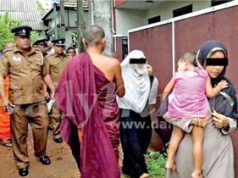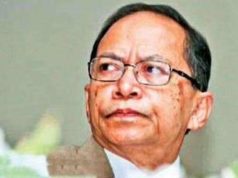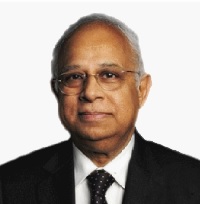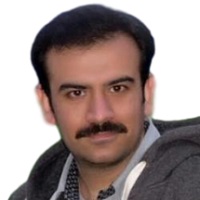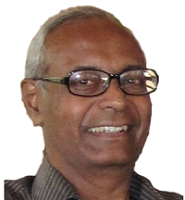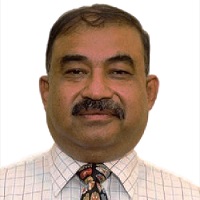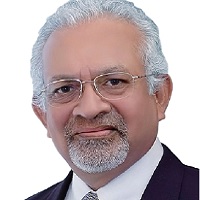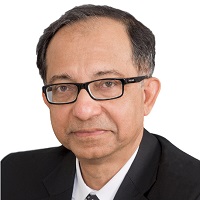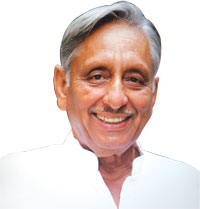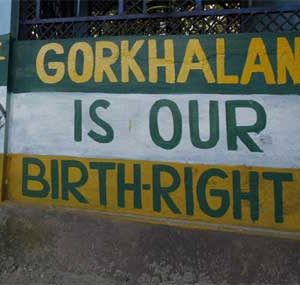The attempts by Sri Lanka’s National Unity government to draft a new constitution in order to seek a permanent solution to the long drawn Tamil ethnic question is afloat in the grey skies of ambiguity.
Although six subcommittees on various subjects had submitted their reports based on wide scale public consultations and the Steering Committee had drafted its own report based on the recommendations by the sub committees, plans of presenting the report to the Constitutional Assembly which comprises the current members of parliament, has been stalled.
It has to be mentioned that the current Sirisena-Wickremesinghe regime is grappling with the poison of ultra nationalistic rhetoric from both the Sinhalese and the Tamils. Former President Mahinda Rajapaksa is into fear mongering about the new constitution and its purported threat to a unitary state and Buddhism. C. V. Wigneswaran, the Northern Province Chief Minister, is poisoning the minds of the Tamil people, demanding sweeping changes as opposed to understanding the current difficulties and working with the government of President Maithripala Sirisena and Prime Minister Ranil Wickremesinghe.
Meanwhile following objections from some of the committee members, the Steering Committee’s report on the new constitution was not presented to the Constitutional Assembly early January this year as planned. This raised fears of more political procrastination and sweeping under the carpet the pre January 08th 2015 election promise this government made to the Tamil minorities of delivering a long term and sustainable political solution to prevent ethnic unrest.
Though the process of initiating a new constitution is not abandoned, the government is mired in handling the deep division of opinion in the Sinhala and Tamil polity. These two lobbies cannot agree over the basic features of any new constitution. Leading to added complications is the Muslim factor. Where the Muslims would figure in a possible devolution of power and in an event of merging the North and East, is unclear. In the background of the current agitation by some Tamil politicians such as Wigneswaran for a merger, there are only vague declarations by the Tamil politicians on the topic of political discussions with the Muslims.
The Tamil parties insist on a “federal” form of government with an extensive devolution of powers to the provinces, which is the direct polar opposite of the views of the Sinhala majority who want a constitution based on the current “unitary” structure.’ The Sri Lankan Muslims, who make around 10% of the population, as well as Sinhalese who are around 75% of the population, who were happy with the 2006 Supreme court ruling making the previous North East merger facilitated through the 1987 Indo Lanka accord, illegal, do not look favourably on the calls by Tamil parties for a re-merger.
It is still unclear if the proposal by the steering committee would recommend a merged Northeast but the pangs of the new constitution’s birth is further mystified by religious based convulsions. The Sinhalese Buddhists want continued recognition of Buddhism as the foremost religion of the country. While this view received open support by the Catholic church in Sri Lanka, there are also popular calls by moderates of all religious groups for a constitution giving priority to secularism.
According to Article 9 of the current constitution of Sri Lanka: “The Republic of Sri Lanka shall give to Buddhism the foremost place and accordingly it shall be the duty of the State to protect and foster the Buddha Sasana, while assuring to all religions the rights granted by Articles 10 and 14(1)(e).”
Buddhism was declared as the State religion by President J. R. Jayawardena in 1978, though the country’s Buddhist majority cohabit with a significant minority of Hindus, Catholics and Muslims. One of the (many) fears of Mahinda Rajapaksa which is extended to his Joint Opposition (a political alliance formed mainly by a faction of the ruling Sri Lanka Freedom Party (SLFP) alongside left-wing parties , is that Buddhism will lose its stronghold in the country if a new constitution is brought forth.
Thus, taking into account the current sentiments and keeping in mind that the SLFP cannot afford to lose to Rajapaksa and his faction in the local government elections that are due, President Sirisena, in an obvious bid to use time as an ally, has requested the Steering Committee to come up with a ‘simplified’ report.
It is learnt that the report by the sub-committees though not making specific recommendations, had incorporated the views of all sections which includes the largely liberal views that generally ruffle the Sinhalese nationalists, such as for provinces to be free to seek manage and control its financial affairs and its security.
It should be mentioned here that while the words ‘devolution’ and ‘federalism’ immediately trigger an offensive reaction from the Sinhalese, there has been an absence of discussion as to how the rural Sinhalese could benefit from devolution, with the provinces being free from the clutches of monopoly of the Central Government. What an actually implemented empowerment (as the Northern provinces wish) would mean in the South and how these Sinhala majority provinces could benefit from similar privileges as the Tamils want, has not been analysed in the rush to see devolution largely as a Tamil sectarian bogey.
The existing 13A, the result of the 1987 Indo-Lanka accord, established the provincial councils and decreed that the provinces conduct its own elections and manage its security and resources. In a positive light it was seen as setting a base for further legal or constitutional powers to be brought about with time, to strengthen the independence of managing provincial matters for better autonomy. Practically however the pact signed between Indian Prime Minister Rajiv Gandhi and Sri Lankan President J R Jayawardene was seen as an arm twisting manoeuvre by India and scoffed upon by the Tamils as an offering of crumbs while the Sinhalese saw it as a near separatist abomination.
In the current context while it is not known what the exact Steering Committee report recommendations are on constitutional reform Minister of National Co-Existence and Official Languages, Mano Ganeshan in a recent interview with the writer stated that the draft constitution is likely to suggest the implementation of the existing 13th Constitutional Amendment (13A) with an additional provision for a Second Chamber in parliament. Cynics meanwhile point out that in the long drawn out malady of lethargy and non implementation that made the 13th amendment a mere numb text, if one could expect a new constitution, however far reaching it is, to have a miraculous functionality.
The Sri Lankan Tamils have been calling for autonomy for the North-Eastern provinces and for control over land and police powers (currently enabled in the 13th Amendment but not implemented) and power over natural resources, provided for in text as a concurrent clause requiring the mutual understanding between the Central and Provincial government. At present, powers over finances lies with the central government and which make the provincial chief ministers mere followers of his masters in the Central Government.
Thus, on matters of financial allocation pertaining to all sectors of development, the provincial government is dependent on the central government and getting anything tangible done for the provinces is based upon the personal friendships Chief Ministers enjoyed with central government representatives.
The views of those such as Mano Ganesan, who leads the Tamil Progressive Alliance (TPA) that represents Indian-origin Tamils, falls into the category of the “moderates.” He urges that the Tamils of Sri Lanka should accept what emerges from the deliberations in the Constituent Assembly and continue to forge out, in a democratic manner, what is best for the Tamil people, while understanding and working with the fears and assumptions of the Sinhalese. This is not the dominant view of most of the members of the Tamil National Alliance which is led by R. Sampanthan who is also at present the Opposition Leader.
It should be meanwhile noted that the political history of Sri Lanka within the past thirty years is dotted with missed opportunities for laying the foundation of a political solution that will enable equal rights and privileges of all communities of the country.
Despite former President Chandrika Bandaranaike Kumaratunga being largely remembered as not having contributed to bringing an end to the war (as was expected by the Tamils when she was elected in 1994), many moderate Tamils remember that Kumaratunga proposed a liberal constitution by which Sri Lanka was to be a Union of Regions and virtually federal. Given entrenched political amnesia in Sri Lanka, it is now hardly remembered that it was the United National Party (UNP) under the leadership of the current Prime Minister, Ranil Wickremesinghe which staunchly opposed Kumaratunga’s attempts. Many Tamils feel that this was one of the best chances the Sri Lanka State and the Tamils had for a permanent political solution and could have ended much bloodshed that followed the years of war that came thereafter.
Meanwhile from the lens of the Sinhala majority, a new constitution may serve as a kind of surgical removal of vestiges of India and thereby the ghost of the 13th Amendment, resulting in a possible back scaling or pruning of potential for regional autonomy.
The view for pessimism, is taking into account the pressure on President Sirisena to please both the Tamils and the Sinhalese Buddhist sentiment and protect his party, the SLFP from further fragmentation owing to threats by former President Rajapaksa, the previous chairman of the SLFP. This is evident in the current decision by Sirisena to call for a fresh report from the steering committee although in December last year it was expected that a vote for a new constitution would take place by April this year. There is meanwhile a likelihood that the government will opt for a referendum with the consent of all parties including the Sri Lanka Freedom Party (SLFP) to pave the way for decision making on reforming the Sri Lankan constitution.
NOTE–This article is part of a series of analysis on constitutional reform, language rights and reconciliation, related to the Lankan post war context.


